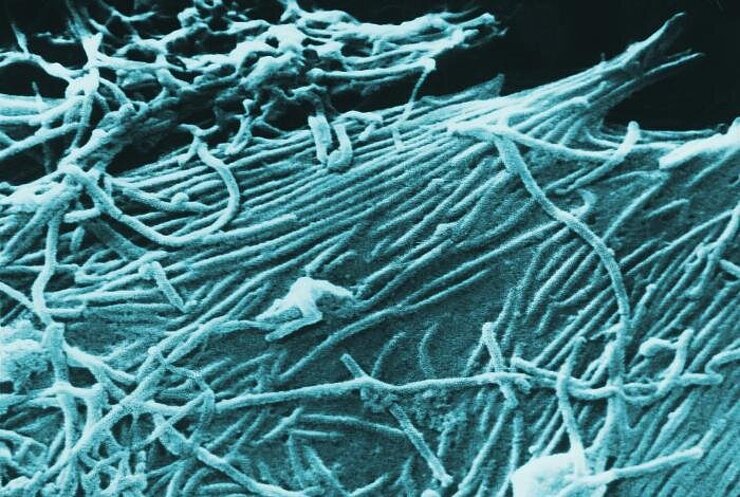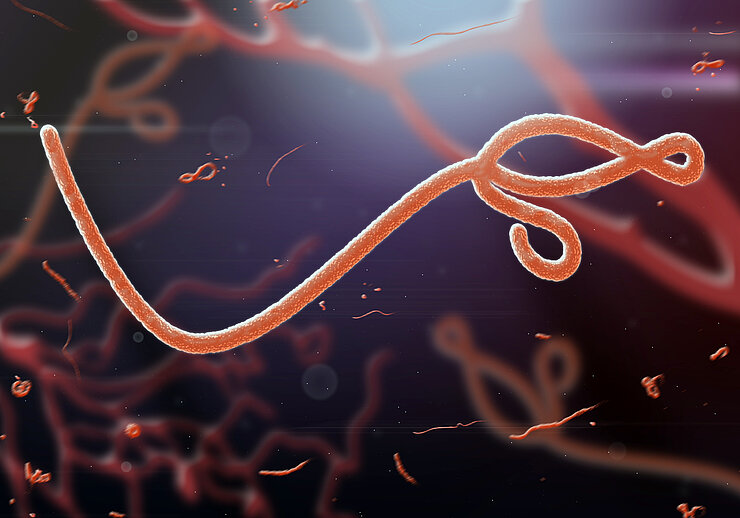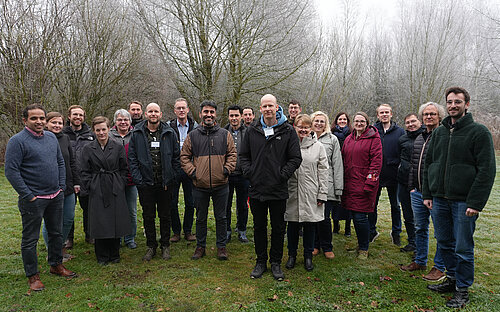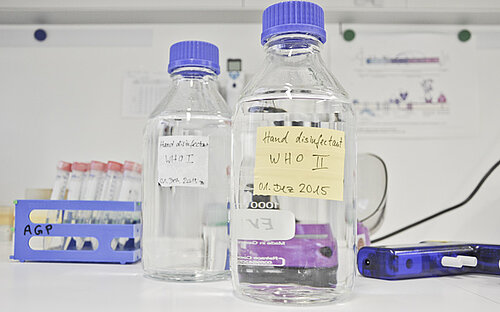Ebola
The outbreaks are sudden and severe. The Ebola fever then spreads rapidly throughout the Endemic disease area. The rate of fatality often is higher than 50%, sometimes up to 90%. Currently, there is no specific antidote and no protective vaccination. Afflicted people typically suffer from so-called "haemorrhagic fever", which is associated with strong internal bleeding. They usually die from loss of blood or organ failure.
The first documented outbreak was observed in 1976 near a tributary of the Congo river called Ebola, after which the disease is named. The pathogen, the Ebola virus, belongs to the family of filoviruses and includes five species of which three – the "Zaire", the "Sudan" and the "Bundibugyo" species – cause severe disease in humans.
Humans are just an intermediate host and are infected rather "by coincidence" by the Ebola Viruses. Their true natural habitat has still not been identified beyond all doubt, but there is much evidence to suggest that the pathogen originated from fruit bats, a family of mammals related to bats. Apes and antelopes can also get infected.
Routes of infection
Humans can get infected through direct contact with infected animals, for example with their excrements or by preparing and eating their meat. The disease is transmitted from human to human through body fluids, such as sweat or blood. There is no evidence of airborne transmission.
According to information from the World Health Organization WHO, there have been approximately 15 outbreaks in Africa that killed more than 1,300 people since 1976. But the outbreaks remained limited to the respective region and subsided comparatively quickly. The current outbreak in West Africa, which started in March 2014, follows a different course though: The spread continues for longer and already extends over large geographical areas; the number of afflicted individuals is much higher. Thus far (as of March 2016), more than 28,000 people have been afflicted and approx. 11,300 succumbed to the disease. Experts are afraid that tens of thousands of people may have become infected.
We have not seen an outbreak of this magnitude ever before. There is reason to fear that the Epidemic might spread to other African countries.

Risks for Europe

It must be expected that individual afflicted people will arrive in Europe as well - inadvertently or aiming to gain better medical service. But epidemiologists do not expect separate spreading of the disease.
However, one very concerning possibility is that the virus might mutate making it become even more easily transmissible. Peter Piot, who discovered Ebola, called this kind of event the true "doomsday scenario" in an interview with Spiegel magazine, and the event becomes more likely as the number of infected people increases.
Infection researchers are therefore searching for effective medications against the Ebola virus on a global scale. The German Center for Infection Research (Deutsches Zentrum für Infektionsforschung, DZIF), of which the HZI is a member organisation, is setting-up studies for investigation of a Vaccine. It might protect the population of the geographical areas at risk from a future catastrophe of the scope currently experienced in the countries of West Africa.
But Gérard Krause also emphasises that the already afflicted people need help urgently: "It is impossible for the countries concerned to contain the dramatic course of the disease with the currently available funds. Enormous efforts by the international community are needed - and they are needed right now".
(mbn)
Further information
Information of the Robert Koch-Institut
Informationen of the Bundeszentrale für gesundheitliche Aufklärung
Fact Sheet der WHO (World Health Organization)
Information of the Bernhard-Nocht-Institut für Tropenmedizin (BNI)
Information of the Centers for Disease Control and Prevention (CDC), USA
Website of „Ärzte ohne Grenzen“
Information of the European Centers of Disease Control (ECDC)
Involved research groups
-
Epidemiology
 Dr Berit Lange
Dr Berit Lange -
Ecology and Emergence of Zoonotic Diseases
 Prof Dr Fabian Leendertz
Prof Dr Fabian Leendertz





